Table of contents
Do you know the benefits of quinoa?
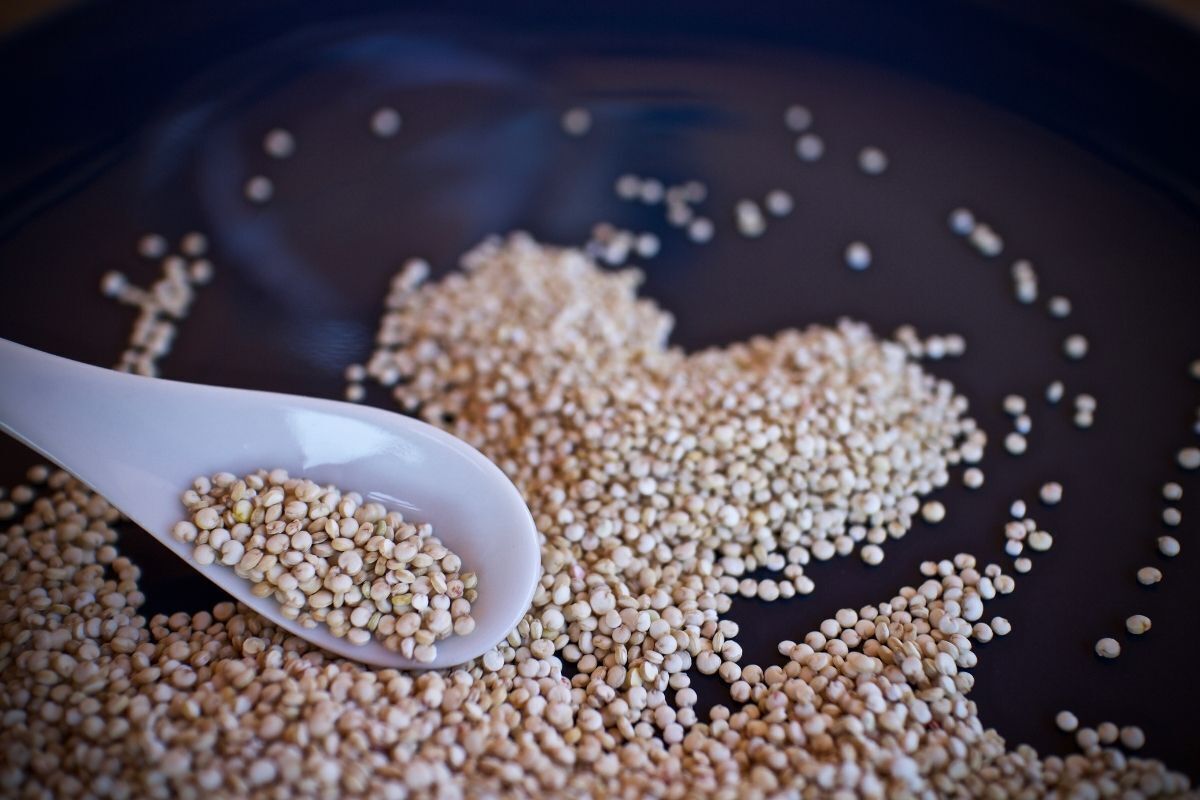
Quinoa is one of the foods capable of offering so many benefits to human health that it is considered a super grain, or a superfood. Its fame exists and does justice to the high concentration of protein, fiber, vitamins and minerals that are present in its composition.
In addition, it is a perfect food for those who are intolerant to gluten, replacing other grains such as rice and wheat flour. This makes it an excellent substitute to be consumed on a daily basis.
Follow the reading and know a little more about this powerful seed, understand its properties and learn how to include it in your diet so you can make the most of its benefits!
Understanding more about quinoa
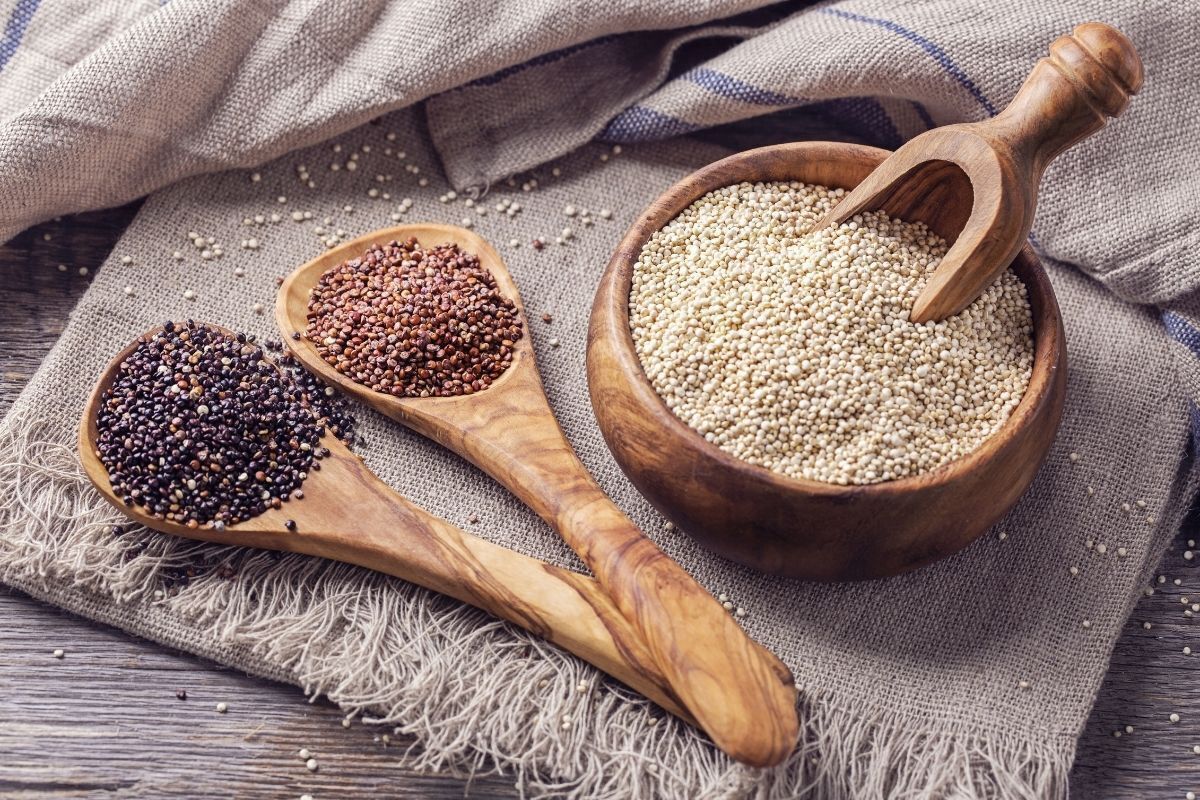
Quinoa has stood out worldwide for its properties and various applications, becoming a versatile food for any diet. Find out more about its origin, history and how it is able to provide so many benefits to your health below!
Origin and history of quinoa seed
Quinoa is becoming increasingly popular around the world, and you can find it in three different types. The main difference between these types is in their color, which can be red, black and white. Each variety is found in the Andean region, more specifically in Colombia, Peru, Bolivia and Ecuador.
Its plantation was domesticated, and its food was appreciated by people of that region more than 3000 years ago. There are even archaeological records that show the use of this grain as pasture for animals about 5200 to 7000 years ago.
All this variety and application was preserved by the Quechuas and Aymarás, which, despite the Spanish colonization of South America, remained preserved with reduced use. Thus, it began to give way to other grain crops, such as wheat and barley, which were more common in Europe.
The composition of each type may vary a little due to the soil in which it was planted. But they all have the highest level of nutritional value, being indicated by the United Nations (UN) for agriculture and food as one of the most complete foods for humans.
Its importance and scope led to 2013 being declared the International Year of Quinoa by the United Nations General Assembly, attracting the world's attention to this grain and awakening everyone's interest in its properties.
What is quinoa used for?
It is known that every 100 grams of quinoa contains 335 kcal, 15 g of protein, 5 g of fiber, 68 g of carbohydrates, 286 mg of phosphorus, 112 mg of calcium and 1.5 mg of iron. In addition, quinoa is gluten-free, making it a great substitute for foods such as soy, corn, rice and wheat.
Thanks to its richness in nutrients such as minerals, proteins, phenolic compounds, fibers, phytoecdysteroids and phytosterols, it still offers anti-inflammatory, antioxidant or neuroprotective properties. In other words, it is able to provide several benefits for physical and mental health.
Its use is quite versatile, and can be consumed from raw grain, flour or cooked, and adapting to all types of diets and recipes. This makes quinoa an accessible grain, facilitating its consumption on a daily basis.
Quinoa characteristics
Quinoa can be used in the same way as other grains and cereals, having a similar nutritional profile to many of them. If you consume quinoa whole, without any part of the grain being removed, you can use it just like other grains, such as rice, for example.
On the other hand, in case it is consumed ground or refined, know that the fiber can be removed during this process. Quinoa in this form can be used to make bread, cakes, pies and even breads.
Its flavor is mild, so this food is easy to be introduced in the diet of both adults and children. In addition, it can also accompany various dishes such as salads, meat, fish, chicken, fruit, among others.
Quinoa properties
Because of its diversity of nutrients, quinoa has several characteristics, such as antioxidant and anti-inflammatory properties, which will help fight aging, strengthen the immune system and prevent the onset of cardiovascular diseases.
Another point is the presence of essential minerals, such as magnesium, calcium, potassium, which strengthen bones, and iron, which helps in the treatment and prevention of anemia. Besides being a food rich in protein and fiber that reduce appetite and help in the weight loss process, it also improves bowel function.
But in addition to its most common nutritional properties, quinoa stands out for being rich in fatty acids, which are extremely beneficial for health, offering mono- and polyunsaturated fats.
Benefits of quinoa
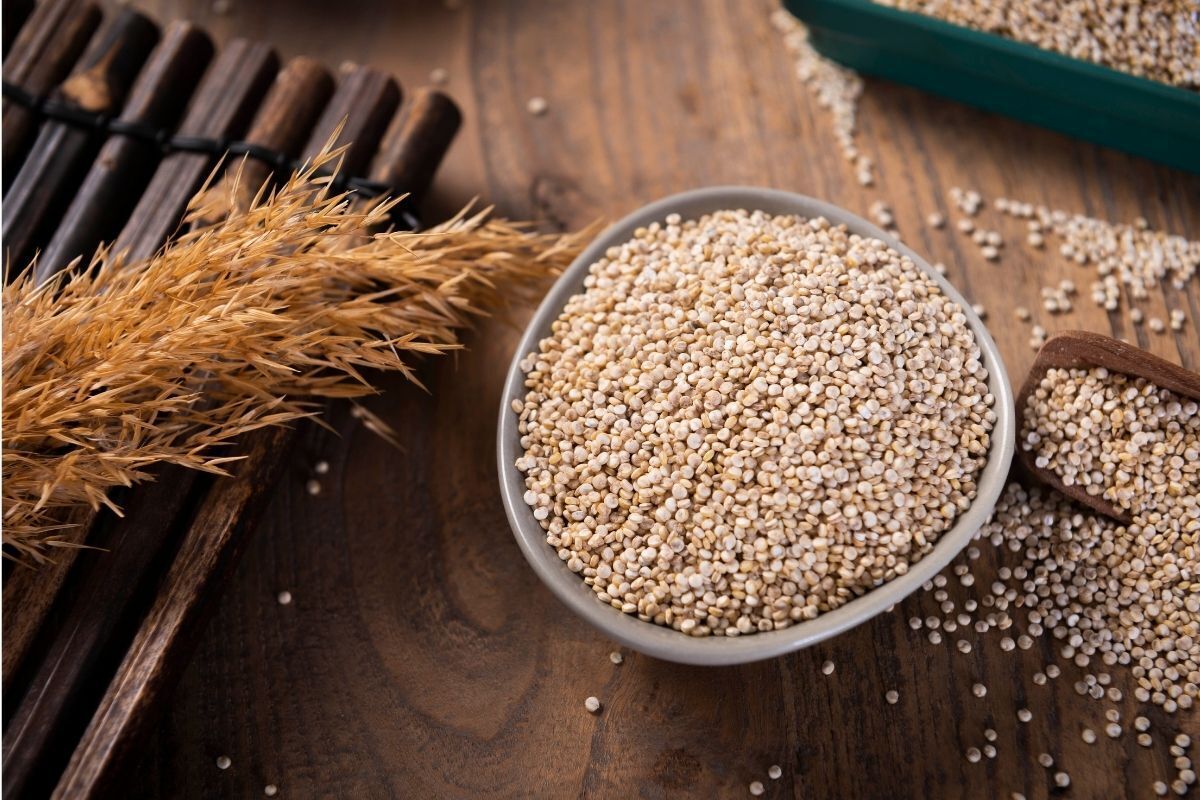
Quinoa is recognized for its high concentration of nutrients capable of favoring the physical, mental and immunological health of the body. Know the main benefits that you will have when consuming this food and surprise yourself!
Helps to lose weight
For having a high concentration of fiber in its composition, quinoa is a strong ally for people who want to lose weight. Since the fiber reduces the absorption of fats and carbohydrates in the digestive process, it gives greater satiety, keeping your glycemic index low.
However, it is important to note that quinoa is not the main factor in weight loss. Its consumption must be accompanied by a balanced diet and regular exercise.
Helps the intestine function
The fiber is the main element in the diet, able to ensure a healthy and controlled intestine. It can be found in two forms, soluble or insoluble. Although each one works in a different way in the digestive system, both are ideal to keep it always regulated.
The advantage is that both types of fiber are present in quinoa, assisting in the complete treatment of the digestive system and the regulation of the intestine. Thanks to its ability to regulate intestinal transit, it is also able to prevent constipation.
Antioxidant action
Although all types of quinoa have a composition rich in oxidants, it is the darker seeds that provide greater amounts of this nutrient. These substances fight free radicals in the cells, protecting cells and preventing premature aging.
A tip for those who want to boost the level of antioxidants in quinoa is in the germination of the grains. This process increases its concentration, and you can use it mainly in salads and taboules.
Assists in reducing blood sugar
In the same way that fiber interacts with fats in the body, quinoa acts with carbohydrates. By absorbing these molecules in the body, it helps control blood glucose, keeping its glycemic index low and preventing the increase in blood sugar levels.
Quinoa has a glycemic index considered low because it is digested slowly by the body. Consequently, its absorption occurs in the same way, preventing peaks in blood sugar. Therefore, this grain is recommended for diabetics, becoming an ally in controlling blood sugar.
Prevents anemia
Other nutrients very present in quinoa are iron and folic acid. These minerals are essential for the formation of hemoglobin and red blood cells, proteins responsible for carrying oxygen to all body cells. This is the main feature that helps fight and prevent anemia.
Strengthens the immune system
According to a study published in a 2015 issue of Food Chemistry, quinoa is rich in flavonoids, such as quercetin and kaempferol. These compounds are powerful antioxidants that help fight several types of cancer.
Therefore, its regular consumption may help in the prevention of these diseases. This is due to its action on the immune system, stimulating the production of white blood cells and regulating their functioning.
Acts against cardiovascular diseases
Quinoa is able to reduce the formation of fatty plaques in the arteries, as it absorbs bad cholesterol (LDL) from the blood and triglycerides, preventing atherosclerosis and acting against cardiovascular diseases such as stroke and heart attack.
Its effects happen thanks to the presence of nutrients such as omega 3 and 6, phytosterols and phenolic compounds, in addition to fiber, which combine the antioxidant effect and the absorption of cholesterol. Other important minerals are potassium and magnesium, which help dilate blood vessels and regulate blood pressure.
Helps in muscle strengthening
Because of the presence of omega 3 and 6, quinoa can help the occurrence of muscle inflammation common after physical activity, reducing inflammation and enhancing muscle recovery. Thus, you will improve your mood and your performance in training, besides feeling less pain after physical activity.
Another remarkable presence is that of phytoecdysteroids. They are able to contribute to the growth and formation of lean mass, being a great alternative for high performance athletes.
Keeps bones strong and healthy
Essential minerals for bone formation are present in quinoa, which are calcium, magnesium and phosphorus. They promote a strengthening and increased strength of bones, preserving their health and preventing diseases such as osteoporosis and rickets.
In addition, hydroxydecidisone-type phytoecdysteroids and maquisterone are substances known to aid the treatment of osteoporosis in women during postmenopause.
Gluten free
Being gluten-free is one of the great benefits that quinoa can offer and one of those that make it so popular, especially for those who are intolerant to this ingredient. Thus, the grain, by bringing so many benefits, acts as a good substitute for foods that contain gluten.
How to use quinoa
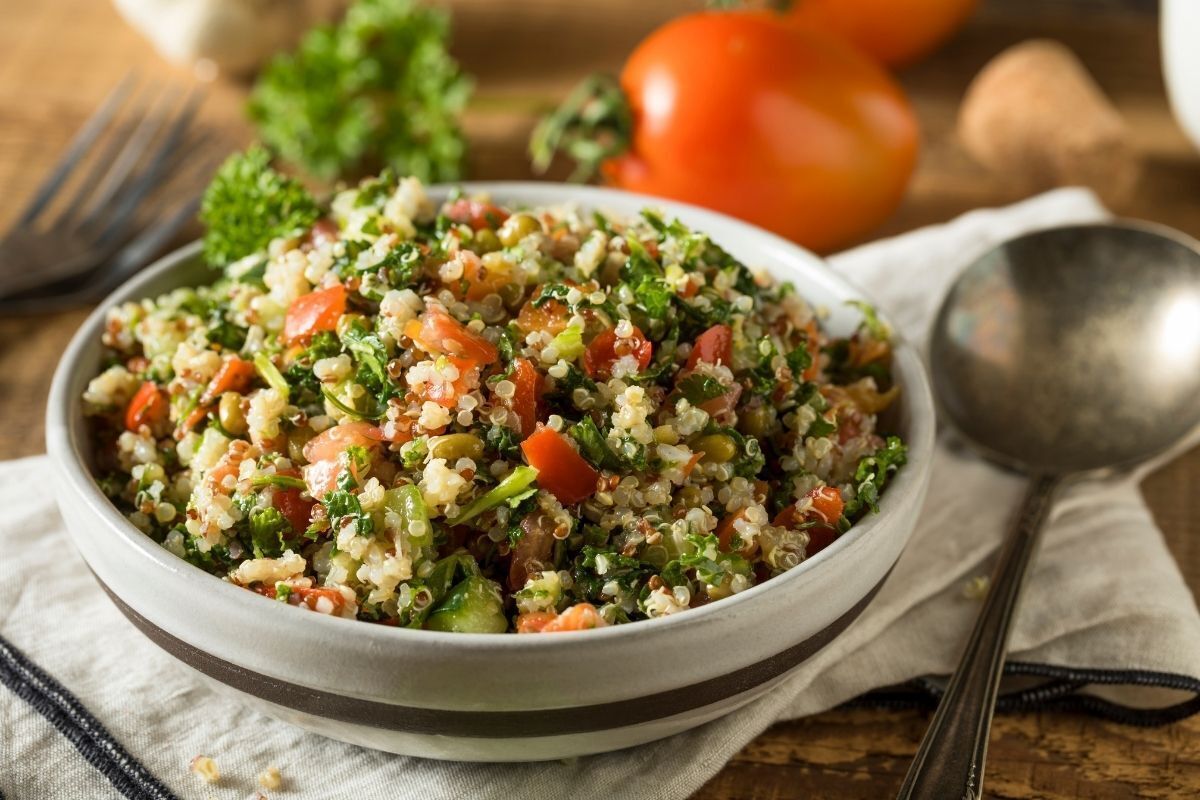
Quinoa is a very versatile food for adapting well to different types of recipes and can be used in any diet and in different ways on a daily basis. Learn below how to use quinoa and enjoy it to taste several ways!
What is the best way to consume quinoa?
There is no best way to consume quinoa, since it stands out for its high versatility, and can be used from its whole grain and passing through the sprouted grain to flour. Discover below some recipes and the various ways to use quinoa.
In the salad
Quinoa can be tried in salad in any form, whether in seed or flour. You can take advantage of the nutrients in any way you like. A common quinoa salad recipe calls for the following ingredients:
- 1 cup quinoa;
- half a cup of grated carrot;
- half a cup of chopped green beans;
- half a cup of cauliflower cut into small pieces;
- half a small onion, chopped;
- 2 tablespoons of the leek stem thinly sliced;
- 1 tablespoon olive oil.
Salt, herbs and black pepper can be added to the salad as well, but the amount is up to each person's taste.
To prepare this salad, you need to follow some recommendations, such as cooking the quinoa, green beans and cauliflower in water for ten minutes. Then, you will saute the onion and leek with olive oil. Then, just add the rest of the ingredients in the pan and mix everything.
With milk or yogurt
It is also common to consume the whole grains of quinoa mixed in milk or yogurt as if they were breakfast cereal. Granola is also an alternative that will provide more fiber in your morning coffee, besides improving the intestinal flow and ensuring greater satiety during the day.
With fruit
Mixing quinoa and fruit is a great alternative to be inserted into your diet, especially after physical exercise, because quinoa serves as a source of protein and carbohydrates essential for muscle recovery. It enhances the formation of lean mass and replenishes the nutrients.
With juices or vitamins
It is not common, but it is possible to prepare juices or vitamins with quinoa. For this form of use, the ideal is to use the flaked quinoa, because it facilitates its ingestion through liquids. A delicious and complete vitamin that uses quinoa in its base is the following:
- 1 tablespoon quinoa flakes;
- 1 silver banana;
- 5 strawberries;
- Juice of 2 oranges.
After separating the ingredients, simply beat all of them together in a blender until the mixture is homogeneous. Then serve in a glass and it's ready.
Pasta, cakes, pies, breads
You can find quinoa in flour form, which makes it an ideal gluten-free ingredient to replace wheat flour in the preparation of cakes, pies, breads and pastas. In this case, you only need to replace the wheat flour present in traditional recipes by quinoa flour.
Kibbeh, tabbouleh, fudge
Quinoa grain can be used to make quinoa, tabbouleh and fudge. Each one has a specific way of preparation. In the first case, that of quinoa, you will have to replace the quinoa flour with quinoa flour, not forgetting to cook it before using it to make it easier to mix and remove the saponins.
Regarding the tabbouleh, you can use the quinoa in two ways, washing the grains in running water with a sieve, or use it cooked, like the quibbeh. These processes are essential to remove the substance responsible for causing flatulence and bitterness of the seed.
The sweet fudge already requires a more sophisticated process, because it involves other ingredients to make the quinoa sweeter. You can use it both in the form of grains or flour, always remembering to cook the quinoa, if it is used in grains, to get the desired texture of this candy.
Further information on quinoa
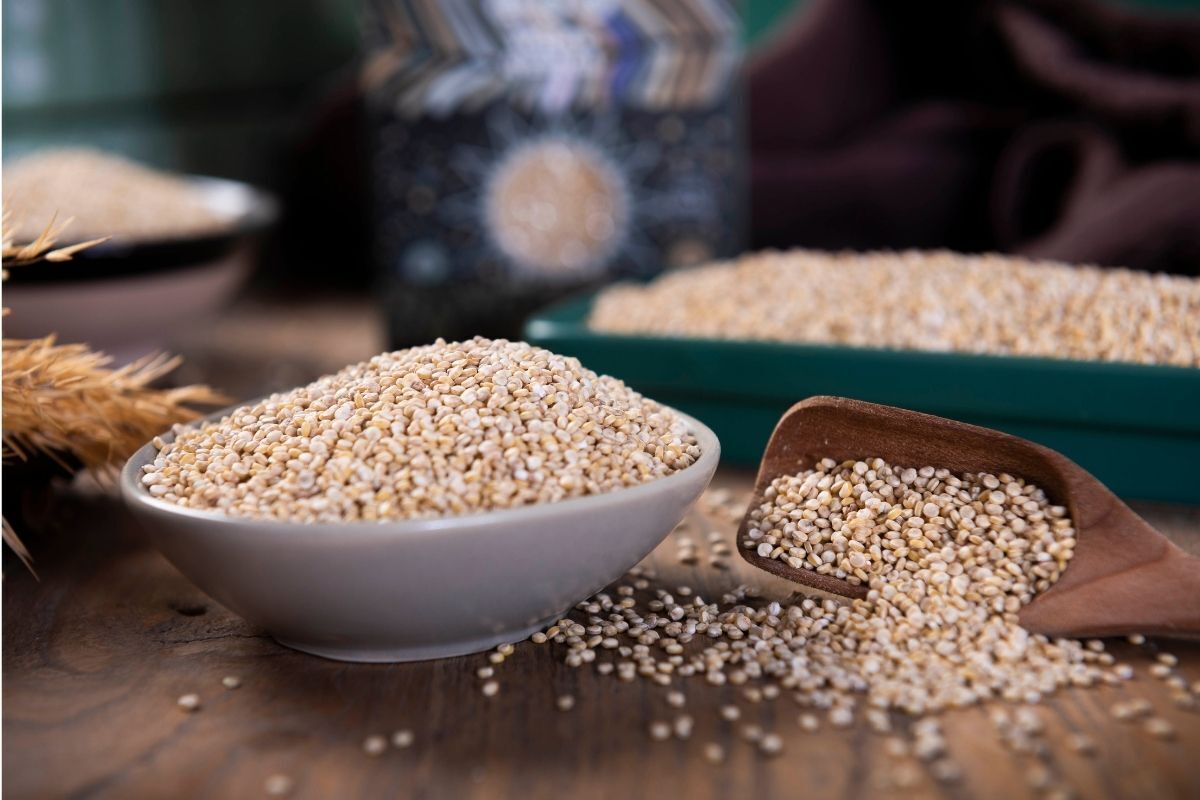
Now that you know the properties and benefits of quinoa, you should be interested in adding this superfood to your diet. But first, you need to make some considerations about its use. Read on to find out what they are before you start consuming it!
How often can quinoa be taken?
You can consume quinoa daily, but avoid exceeding two tablespoons per day in its consumption. It is a high-calorie grain, and its excess may end up disfavoring your diet.
Therefore, it is important to consult a nutritionist, so that he evaluates the ideal amounts and frequency for your body. Always try to respect your limits so that you do not harm your goal in relation to what will be added.
Possible side effects of quinoa
Because of the type of grain, rich in nutrients such as fiber and protein, quinoa can be difficult to be absorbed by your body. Remember that it is not only the excess fiber that can cause flatulence, but also the saponin, which is present on the surface of the grain.
To avoid this side effect on your intake, try washing the beans under running water or cooking them in water for up to 20 minutes. This alone will reduce the chances of you having problems with flatus.
Contraindications to quinoa
Quinoa has substances known as phytates, which, depending on consumption, are capable of reducing the absorption of minerals that are present in the food, such as iron and zinc. One way to eliminate this substance is to wash the grains before any procedure, because it will reduce the concentration of this substance.
Excess consumption can also cause abdominal bloating, stomach pain and flatulence because of its high concentration of fiber. So, keep an eye on your diet and avoid exaggeration.
Quinoa has several benefits!
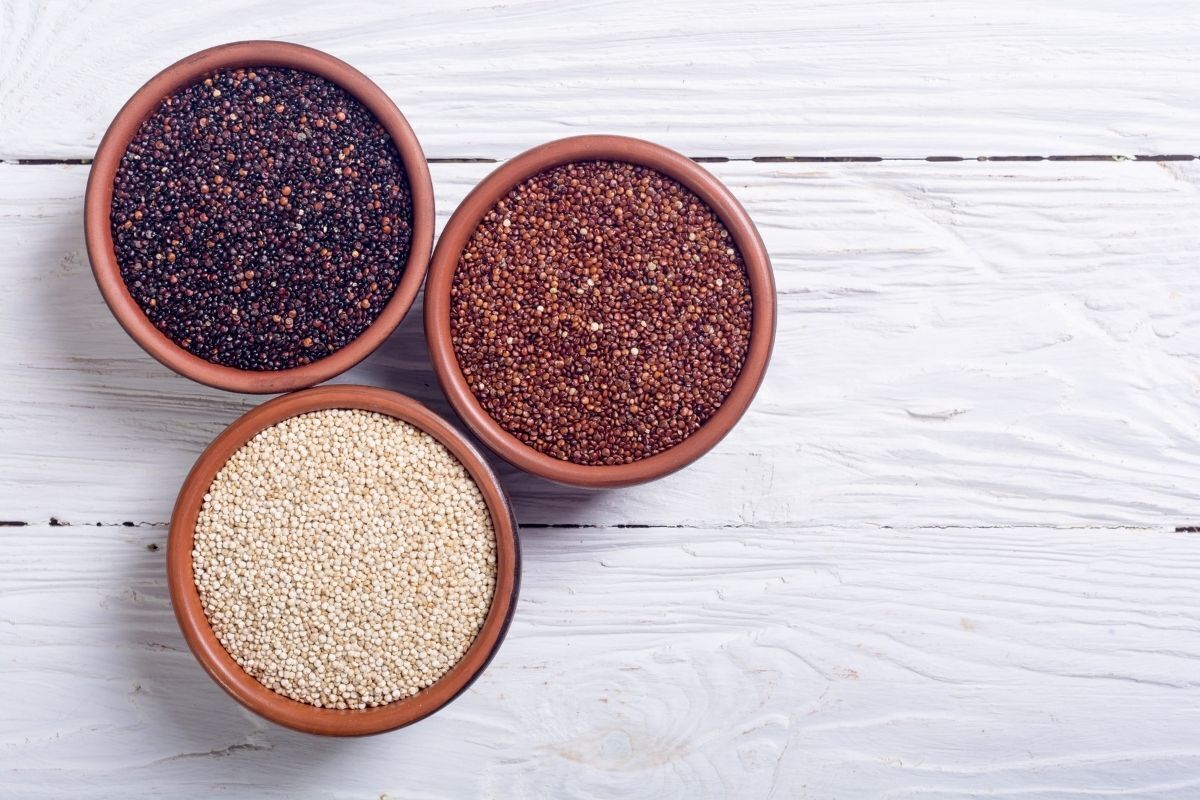
Quinoa is not considered a super grain for nothing, as it has a number of essential nutrients for health. Therefore, its consumption will be favoring your health both physical and mental, in addition to ensuring a healthier longevity and well-being.
The best thing is that the fact that it has become popular allows you to have easy access to this ingredient, so you can take advantage of its benefits and use it in many ways, providing not only health to your body, but also delight in different recipes.
Quinoa is worth adding to your diet, so talk to your dietician and add it gradually so you can enjoy its many benefits more efficiently!

